Jules Gascard
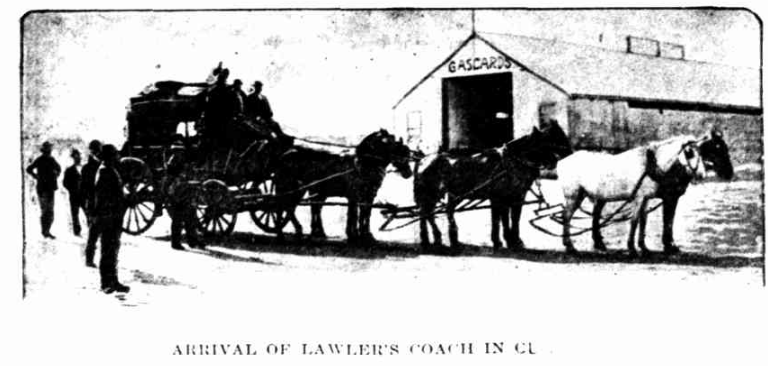
© Janet Lane walers.blogspot.com Image: Leader (Melb.) 18th October, 1898
Please note there may be images of Aboriginal people of the past, who have passed on, which may be distressing for some.
“The best coach horses in the entire world” – a deserved compliment often given to the horses of Jules Gascard in W.A. Jules Samuel Gascard was born in Switzerland about 1836. He migrated to Australia and lived in Victoria where he married Jeanette (known as Janet) Barr, born in Scotland 1837. They had four children, Hannah, Augustine, Samuel and Jules. Jules senior as well as being in the horse trade, was also a wine merchant. He made his living from the horse trade, both within Australia and export.
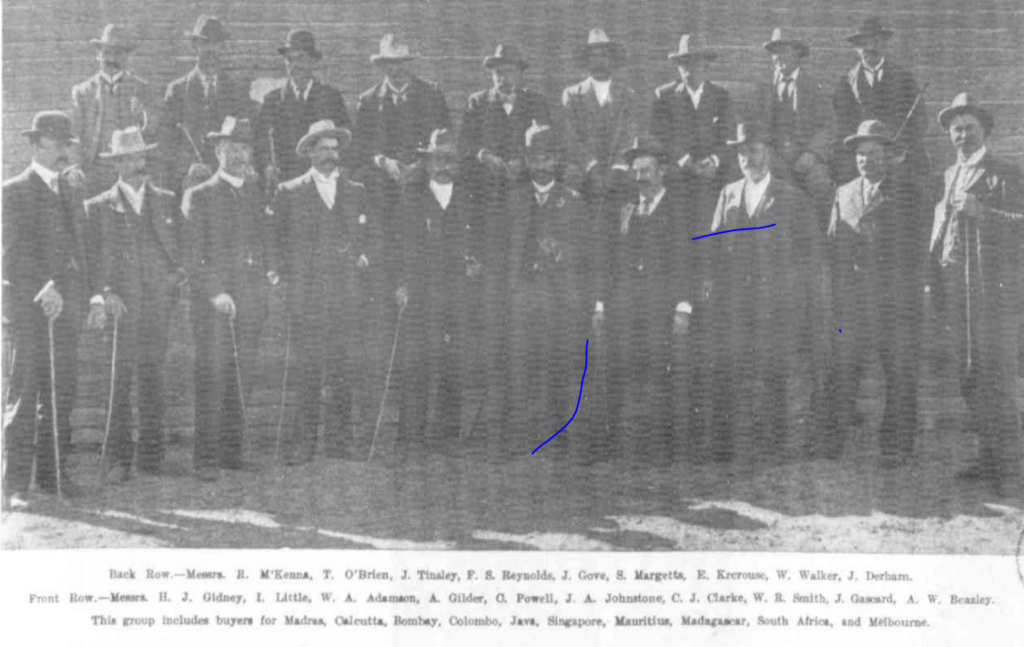
Jules was based in Victoria and traded in horses all his life, including sending the first shipment of horses to India from Port Augusta. He got into trading to WA too, particularly to Geraldton – and as mining was taking off inland from there in a huge way, saw the need for coaches – to carry miners in and out, their gear, and their ore back out. He became a sail-in-sail-out coach owner, spending most of his time in W.A.
Hard to find a photo of Jules, but he is in several group photos over the years at Kidman’s Kapunda horse sales (Image: The Australasian, 19th April, 1902. Front row, 2nd from right).
Jules bought widely in several states. A few examples: in 1875 he sold draughts, medium draughts and light harness sorts, a total of 62 head, at the Royal Horse Bazaar (Melbourne), they’d been overlanded from S.A. In 1876 he was buying the same types over at Kapunda sales, 50 head, plus another 74 at a country sale, etc. In 1885 at Herggot (S.A.) he bought 138 horses from the Beltana Pastoral Company and sent them to Port Augusta to be shipped on the Bucephalus to India – thought to be the first shipment of horses from that port.
In 1886 J. Gascard and Son bought in Qld, at Dalton Station, 150 head. In 1887 he shipped 178 horses from Blanchewater and Myrtle Springs, from Port Augusta, on the steamer Port Jackson. Various other loads to India. In 1886 he was out at Hutchinson’s station bidding. 1886 at Adelaide horse sales, draughts, mediums and stock horses, all to be overlanded to Victoria. He also bought at Bourke, etc etc. Every year the Gascards traded horses – it was their livelihood. The boys also showed horses, winning with hackneys, buggy and carriage horses and hunters. Son Jules became a judge at horse shows too.
Image: Jules Gascard, Geraldton Express & Murchison Advertiser, 26th March, 1897
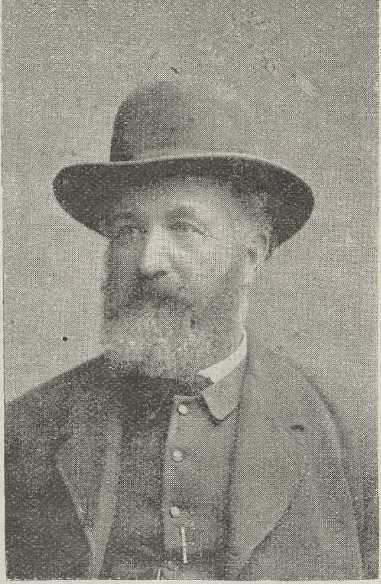
Jules junior was also a horseman, buying for India and local markets and breaking horses to add value. In 1901 he bought several lots in S.A. and railed them to Victoria for shipping. A regular at the Kapunda sales, along with judging carriage and buggy horses at Melbourne Show 1909, horses and ponies in 1917. He lived at Ballan. Sadly, his brother Samuel died unexpectedly in 1898, although he’d been ill, at Bourke, while there with Jules for horse sales. Samuel and Jules had become ‘Gascard Brothers’, trading to India; Jules setting up one of the neatest horse training establishments in Australia at Ballan. The family were known for giving generously to charity. Jules’ house and gardens were also landmarks of Ballan; he also enlisted and went to WW1 on the ship Shropshire. From 1905 young Jules had held monthly horse sales at his Ballan property. In 1891 he showed a light chestnut roadster stallion that was praised in the papers. In 1903 he paid 100 guineas, a huge price, for a pony stallion named Kentucky. A great Waler family.
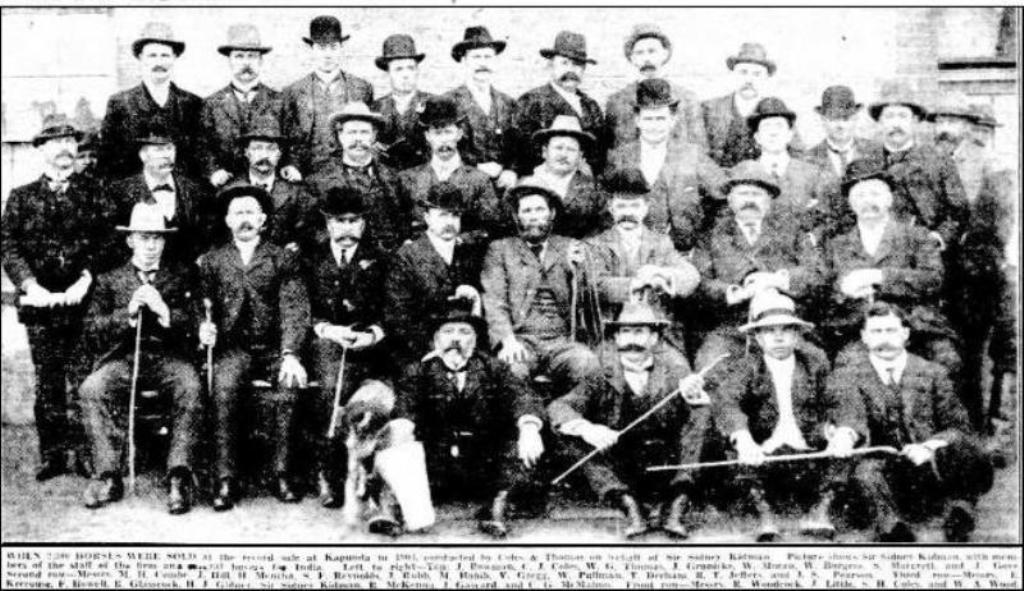
Jules senior was of ‘Herculean’ build. He’d sent horses to India, then identified a new market over west – he went over to W.A. in the early 1890’s, making a move there for work in 1892 (one might call it ‘sail-in, sail-out’). In his travels buying and selling horses, a few stories came to light about women he knew – obviously a bit of a lad.
In 1892 he held a big horse sale at Geraldton, it ran over two days and all horses were sold at good prices, some had arrived on the S.S. Flinders from Melbourne while another 142 head arrived on that great horse ship the Clitus, which had as many horses again to carry to Mauritius. The trip from Melbourne to Geraldton had only taken 10 days, and the Clitus at that stage, drawing 21 feet, was one of the biggest ships to trade to Geraldton. Captain Frith spoke highly of the harbour. They were draught types but not pure draughts – good artillery types. Another load arrived on the horse ship Bucephalus, described by the West Australian’s Geraldton correspondent as ‘small and nuggety, well suited to the work of the district’, and better than another load for someone else which arrived on another ship at the same time, which were ‘too heavy for the work’. Gascard knew his market, in the same year, 1892, he’d sold fifty draughts in Perth for top prices.
He brought several shiploads of good work horses, mostly draughts and coachers, to W.A. In 1893 he held another successful sale in Geraldton, 40 of these horses had arrived on the S.S. Eddystone, others on the Nemesis. Jules himself went over to Victoria to select the horses, and papers were full of praise, calling them the best W.A. had ever seen, on arrival there. Many others brought horses into Geraldton but Gascard’s were regarded as the best.
There was a massive demand for horses as iron ore was carted from the Weld Range to port- over 400 horse teams were used. They needed to be powerful. There were big gold rushes on and mills needed to be carted too, all sorts of machinery and goods.
Jules set up business in the small town of Cue, 45 miles from Mt Weld, where he had livery stables and a horse bazaar (included stables, fodder, saddlery, wheelwright, blacksmith’s shop). His massive coaching stables were in Robinson Street. Gascard set up a famous coaching business which in 1895 also took the mail when he got the contract for 10,000 pounds, the run between Mullewa and Cue. He became known as ‘The King of the Road’ along the Murchison.
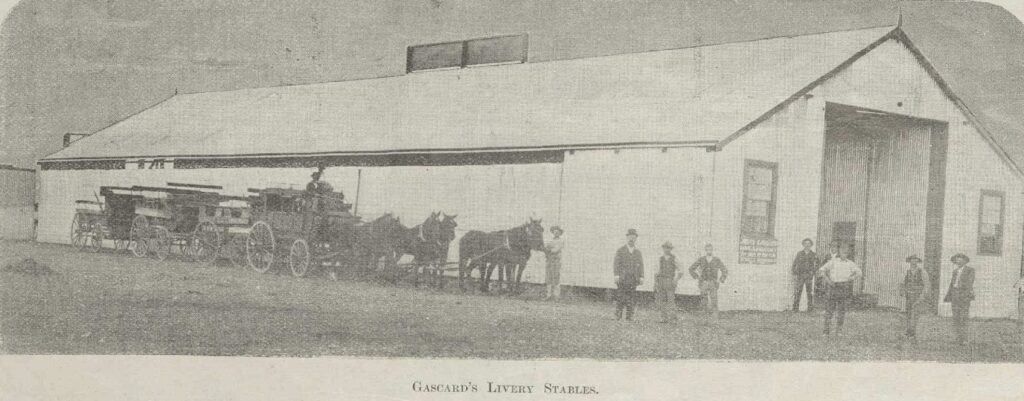
His coaches were soon breaking records for time on runs (Geraldton to Cue 3 days laden, return 41 hours, coachman Richard Webb), and being praised for their splendid teams of horses, and good coaches of Cobb and Co. build. He staged well – changed horses every 15 miles so he could get along at a smart rate – and his feeding methods were also praised because his horses were always in prime condition. W. Grey managed the coach and camel line for some time and was highly regarded.
Gascard’s coaches carried a ton of mail, literally, each trip, then there were passengers and baggage. A lot of the mail was machinery, gold, ore. To do this at a gallop over dusty roads in tough, treeless terrain requires powerful horses.
Many hopeful prospectors got to the Murchison Gold Fields diggings on his coaches, some returned with pockets literally full of gold, including one of my great great uncles! His big run was to Peak Hill, 180 miles away, through Jack’s Well, Tuckanarra, Stake Well, Nannine (no Meekatharra then) and Abbott’s to Peak Hill; they also did the run to Lawlers, Lake Way (Lake Austin), Yalgoo and Day Dawn. He had several mail/coaching runs. His carrying business and livery hired horses and camel teams out.
In 1895 his run from Cue to Mullewa employed 30 people and 100 horses, no grass en route meant he bought fodder. Other runs used more horses – in 1896 he had 400 horses in use. The mail Gascard’s line carried were then the heaviest in eastern W.A. on top of that were passengers, baggage and other goods. Horses had to be strong. When rains meant no coaches could run from Geraldton to Cue, Gascard’s camels took people and goods through. Jules was an expert and chose wisely. He bought the best horses, no cheap light sorts.
He also bought Annear Station on the North Murchison for horse breeding and a horse depot. In 1898 newspapers reported bodies of two of his drovers were found, perished (died of thirst) and a third one found barely alive. Jules himself hurried to see what had happened, found his three drovers perfectly safe, and that bodies and rescued person were unemployed men looking for work, who’d sadly died trying to get to Peak Hill.
In 1897 Arnold Ferry bought 70 horses in India for Jules Gascard, to be delivered to Fremantle, but the ship was forced to take the horses to Melbourne instead, as India had bubonic plague at the time quarantine stopped them landing in Fremantle. They probably went to the Gascard family in Victoria and were re-shipped. Ferry took a lot of horses to India and often bought a few quality horses to bring back too.
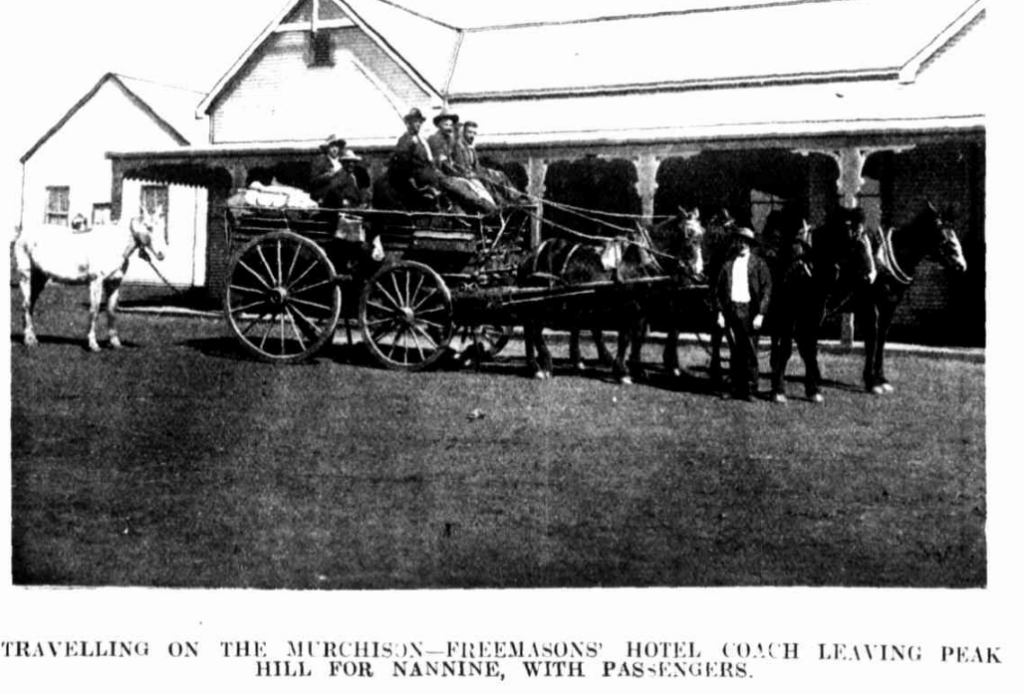
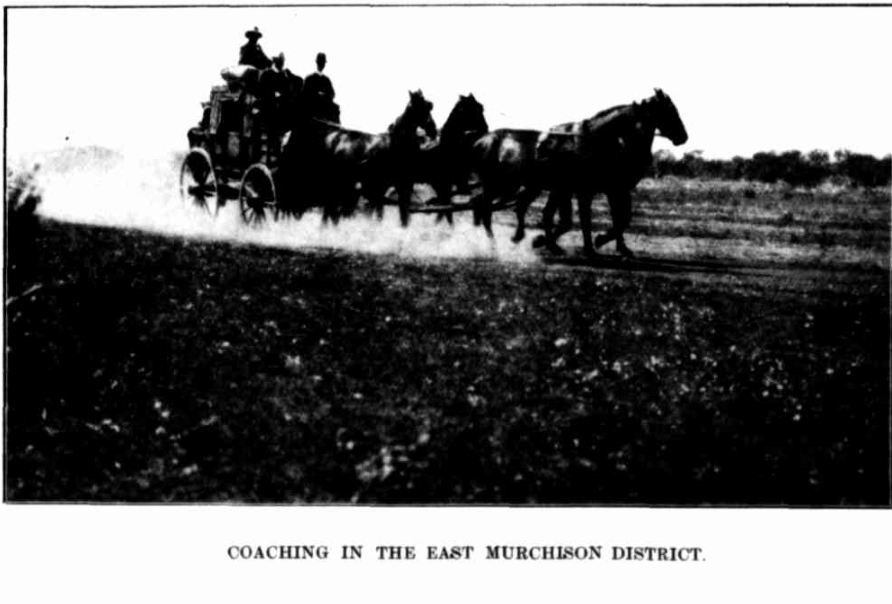
Images: Western Mail 28th January 1905; Western Mail, 4th July, 1913
Jules spent most of his time in WA once he set up his coach lines and work horse breeding there. He died in Geraldton of a heart attack in 1899 and was taken back to Victoria by his family for burial. A great character, Jules Gascard did much to improve the horses of the area and was very popular, ‘a good boss’ and much missed. A tremendous horse and camel man.
Other coach lines were also in the area such as Cobb & Co, there was a big demand for horses and Jules was the main supplier. He staged his coaches every 15 miles (change of horses) to keep the coaches moving at a fast rate. Some of his coach line managers and drivers became legendary themselves. Loads of stories.
After Jules’ death, Geraldton identity Bob Allen took over his business. Bob was also a top coachman. The coaches were not always vehicles of that name, but the vehicle of a coach service; often vehicles to suit the country and or loads carried were used such as wagonettes etc.
Hundreds of horses were kept along the coach routes – over 100 on the Geraldton-Cue run alone.
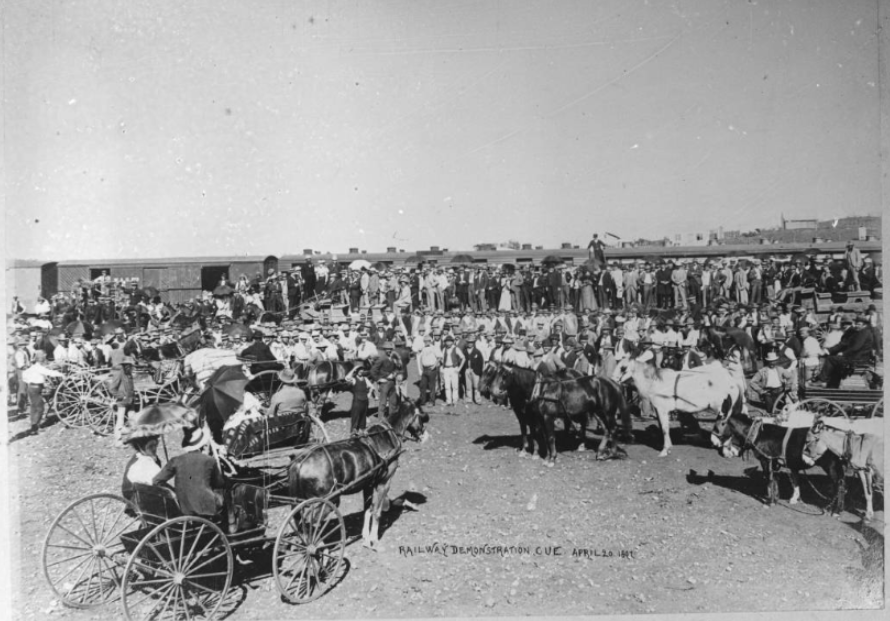
He also kept work camels – used from Geraldton to Cue when the going was too hard for horses to get through. He had big government contracts for mail. Jules’ camel teams took supplies to most of the big businesses in the towns of mining areas of the Murchison, Weld Range.
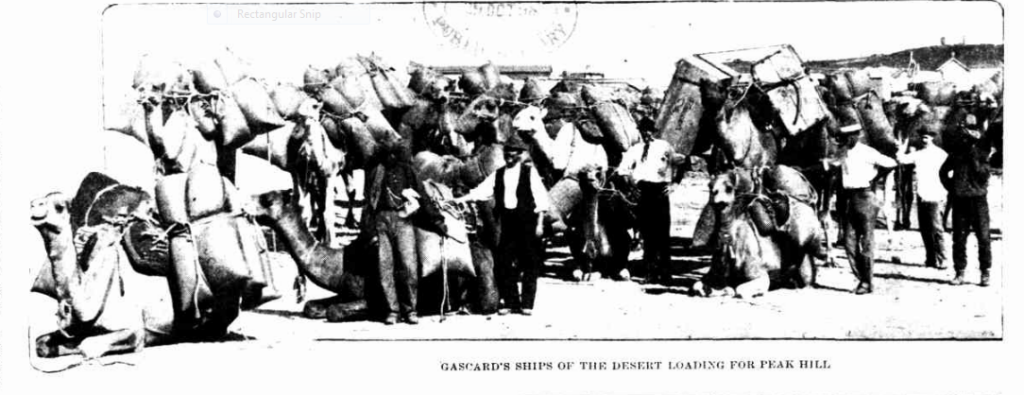
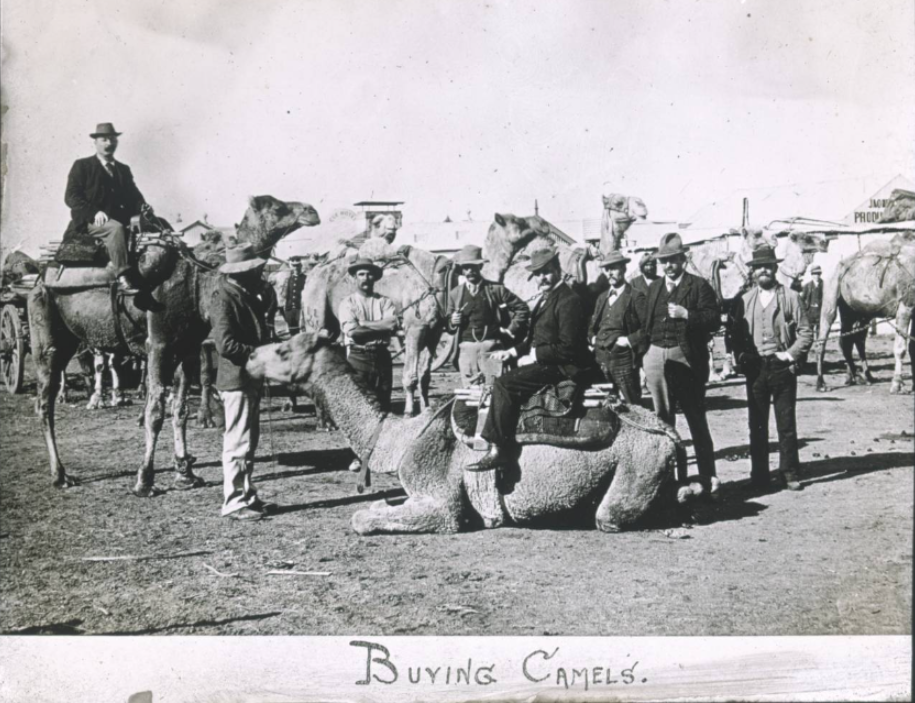
Images: Gascard’s ships of the desert loading for Peak Hill. Leader (Melb.) 18th October, 1898; Camel trading, Cue, Western Australia, ca. 1895. State Library W.A.
The Aboriginal people had mined various ores at Mt Weld for thousands of years, it was one of their primary mine sites – there were mine galleries, and many stone implements have been found. Daisy Bates visited and recorded a lot about it.
After colonisation, many tried their luck, taking up mining leases all over the place. They started with nothing and worked hard – it usually paid off – and there was a giant demand for working horses. These days Mt Weld mine is owned by Lynas Rare Earth.
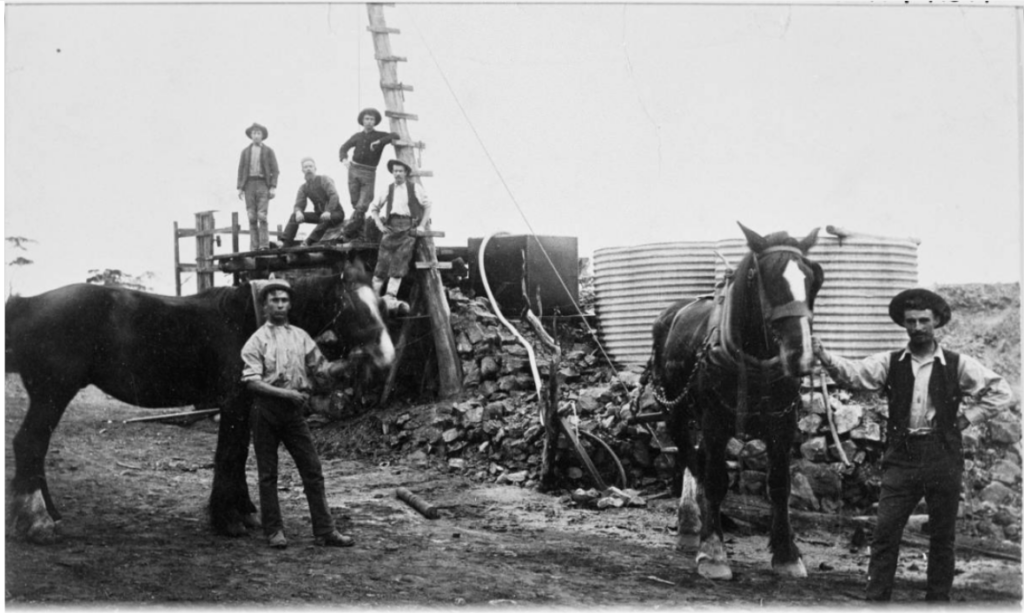
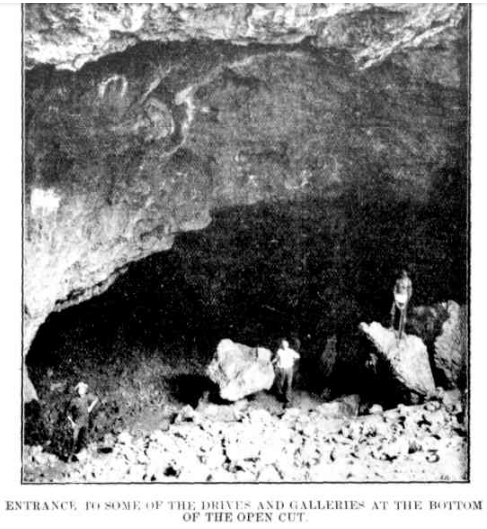
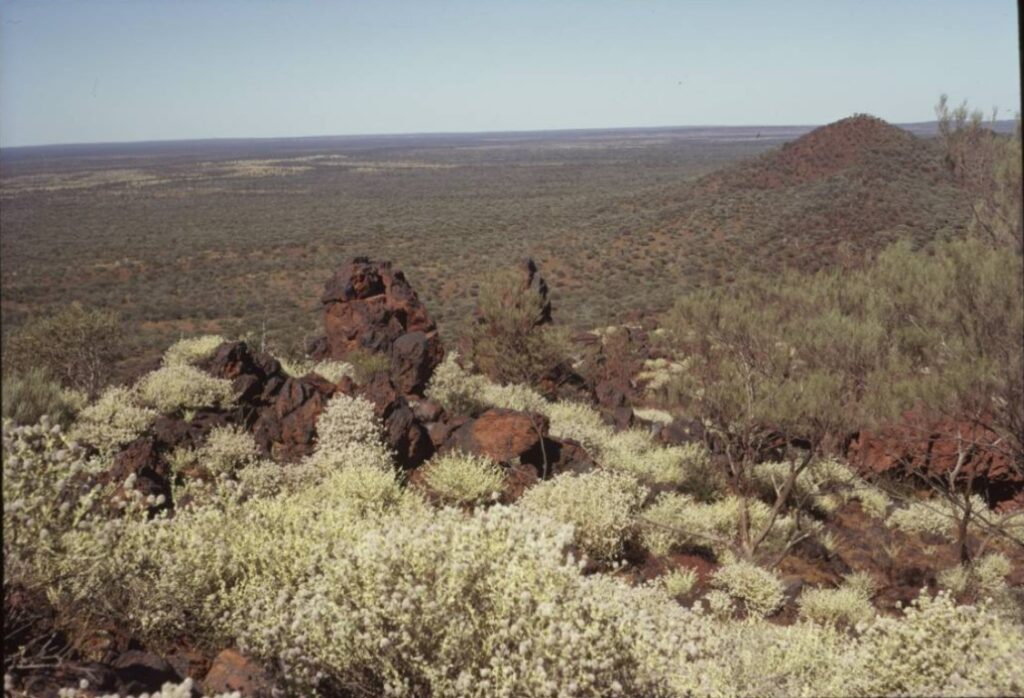
Images: The Lady Forrest Mine, near Cue. c. 1895. State Library W.A.; Entrance to one of the Mt Weld Aboriginal gallery and mine sites. Daisy Bates article in the Western Mail, April 3, 1903.; Mulga and mulla mulla growing in the Weld Range, Western Australia. 1965-85. State Library W.A.
The horses had to be tough in the goldfields country. People also took up pastoral leases on country where mining was going on, again tough horses needed for stock work, travel and wool carting. When the Mt Weld horses DNA was tested at the Texas A&M Uni a few years back it was found to be unique, quite different to the Central Australian Walers; to be expected of course and showing how isolation keeps these grand old strains intact.
At gatherings at all these mine sites – in those times substantial towns – bush racing was also popular, the entrants being local horses, not registered TB’s; Laverton, Peak Hill, Cue etc all held great bush race meetings.
It was a blessing to get some horses from Mt Weld a few years back thanks to Rob Forster – direct descendants of Jules Gascard’s mighty working coach horses and the mine and farm horses of the area – the best coach horses in the world! A rich, living West Australian legacy from the mining industry. Many men from the area joined up in WW1, most as Light Horsemen, and took their horse with them.
Thank you to all who care for the Mt Weld Walers, real Aussie horses indeed.